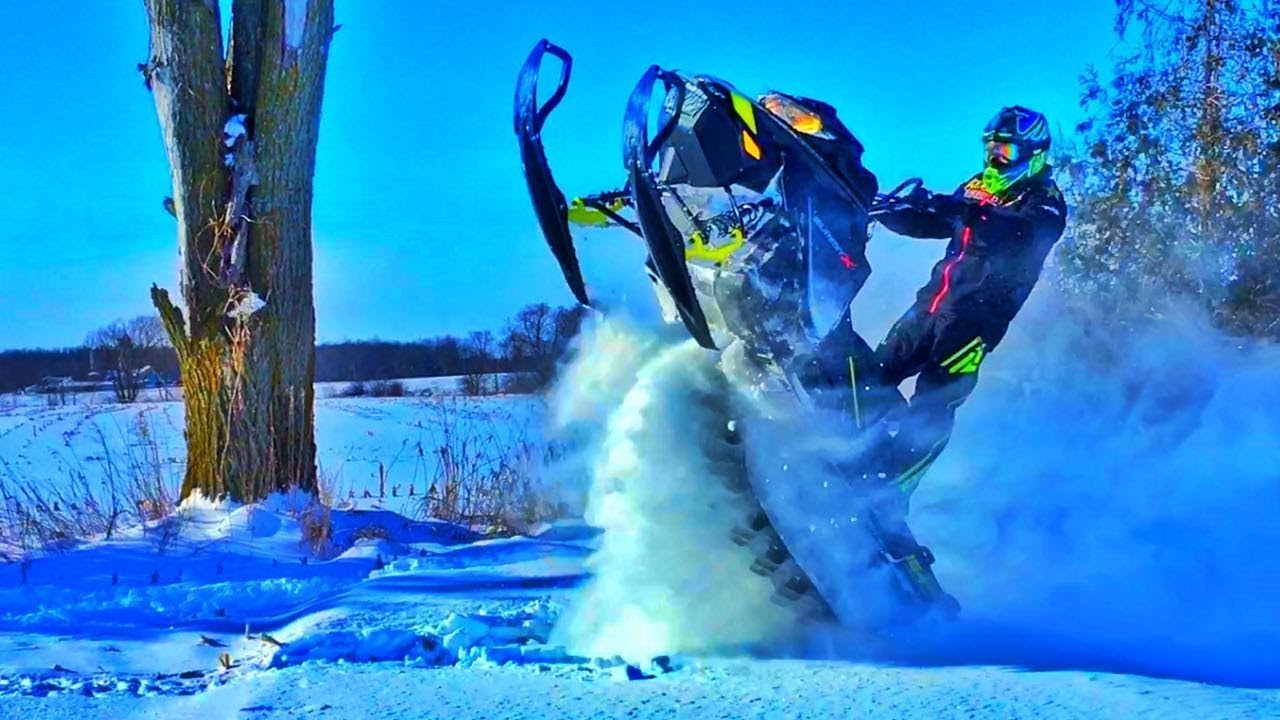
“If I had asked people what they wanted, they would have said faster horses.” – Henry Ford
Those words are commonly attributed to the American industrialist, Ford, who revolutionized transportation with his affordable, mass market Model T automobile.
In truth, that quote has never been verifiably traced back to anything Ford ever said or wrote, and it’s unlikely that he was so arrogant as to imply that his innovation occurred in the total absence of consumer input.
Ford was, however, clearly insightful enough to separate the literal demands of his future customers from their actual desire—which of course was to get from Point A to Point B more efficiently. And that’s what drives success: the ability to interpret and understand what customers truly want, and to provide a product that meets or exceeds that expectation.
Case in point: two snowmobile models that were new for the year 2020—the Polaris RMK KHAOS and Ski-Doo Summit X with Expert Package—are the direct result of manufacturers hearing the demands of their customer base.
What Drives Snowmobile Development
For Polaris, development starts with listening and understanding what the customer is asking for, says Director of Snowmobile Product Planning at Polaris, Marty Sampson. Sampson has been with Polaris for 23 years, as the lead role in mountain sled development and validation for many years, and now overseeing the entire Polaris snowmobile product lineup.
“The KHAOS came from what some of our customers were telling us,” says Sampson. Through various customer feedback channels, they were starting to hear and piece together snippets of feedback that said, I don’t always need a sled to be as precise or as focused as what a PRO acts like.
k time to hear that though,” says Sampson. “We spent a lot of time and a lot of years making the PRO-RMK just better and better at a fairly focused element, which was—how steep can you climb, how steep of a sidehill line can you pull, how precisely can you carve around that tree. I know that because I was part of that team.
“Quite frankly, it left some people who don’t always ride like that feeling like the sled wasn’t as fun as they’d like it to be for how they want to use it. What we pieced together was: we need a sled that’s a little bit less focused on one thing.” The result was the RMK KHAOS, which was designed specifically to exhibit additional transfer and ski lift for a more lively and fun feeling, without sacrificing much of the precise handling of the PRO-RMK.
As for BRP, the goal with the Ski-Doo Summit Expert was also about addressing feedback the manufacturer had received from both their expert ambassadors and customers alike. The Expert offers improvements based on ideas developed and tested in the field by Ski-Doo backcountry experts. These allow the sled to be more capable in challenging terrain and, like the KHAOS, the Expert also exhibits a more playful attitude.
Feedback Comes in Many Forms
So how do the manufacturers capture useful feedback from customers? They try to gather as much consumer voice as they can, through many different channels. Much of that, of course, comes from directly talking with customers on rides, demos and at public events. And yes, believe it or not, even social media comments are being scrutinized. The marketing team is living in the consumer world, and their role in development is to collaborate with the development team to incorporate consumer feedback.
Another source of feedback comes from the frontline—the dealership network. As Sampson points out, a dealer who is in-tune with their customer base can accurately communicate the desires of many individual customers with a single voice.
Naturally, the manufacturers invest in traditional research methods as well, using surveys and focus groups to gain valuable consumer insights.
Another piece of the puzzle comes from the folks working for the manufacturer being enthusiasts and users themselves.
Analyzing and interpreting all that feedback requires some reading between the lines, says Sampson. “You listen, and you ride and you see what people are doing.”
The Role of the Athlete Ambassador
Athletes and ambassadors, such as Ski-Doo Backcountry Expert Carl Kuster, are a tremendous source of feedback for manufacturers as well, and their value is two-fold.
First of all, athletes who ride nearly every day have the opportunity to gain a lot of practical experience with the product. When they’re riding, they’re working—unlike most sledders, who are just there for a good time. They are thinking critically about how the vehicle is performing in all manner of varying snow conditions, elevation, terrain and weather. Kuster’s background in snowmobile racing and his experience as a journeyman motorcycle mechanic, for example, allows him to make the kinds of diagnostic assessments that provide invaluable feedback to the engineers at BRP.
An example of the development that can start at the athlete level is Ski-Doo’s removable snowflap, an idea that Kuster started playing around with back in 2008. He customized a snowflap that could be held in place with a couple of clutch cover pins and quickly removed without tools. Today, BRP manufactures a removable snowflap as an accessory; and in the case of the Expert Package, performance benefits are reaped with no snowflap at all.

 Admin
Admin
Leave A Reply
Your email address will not be published. Required fields are marked *